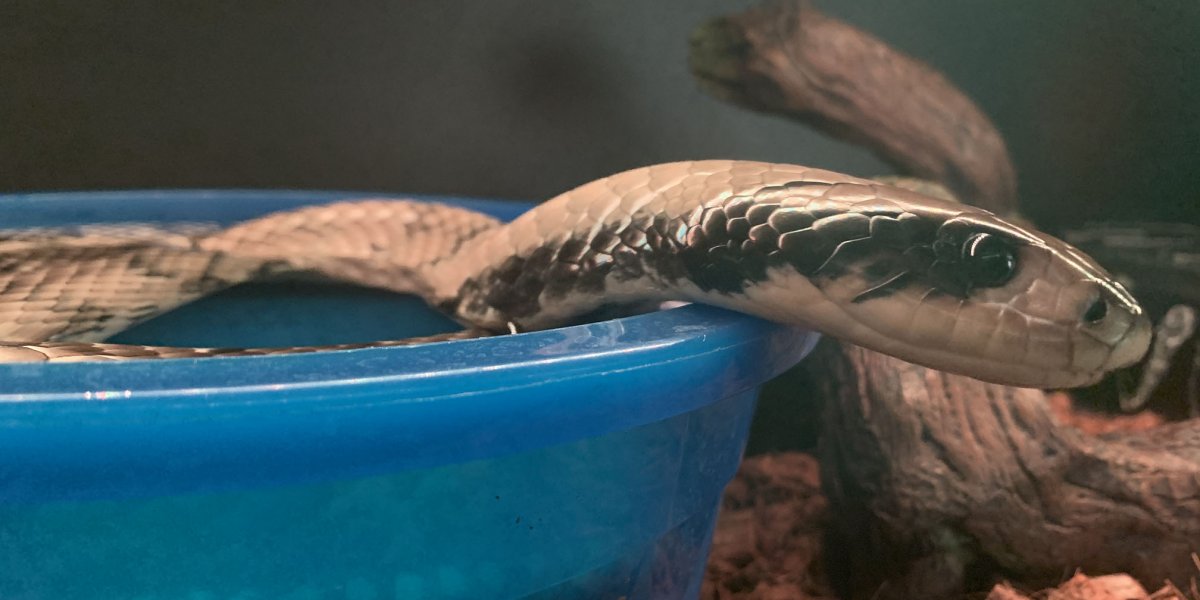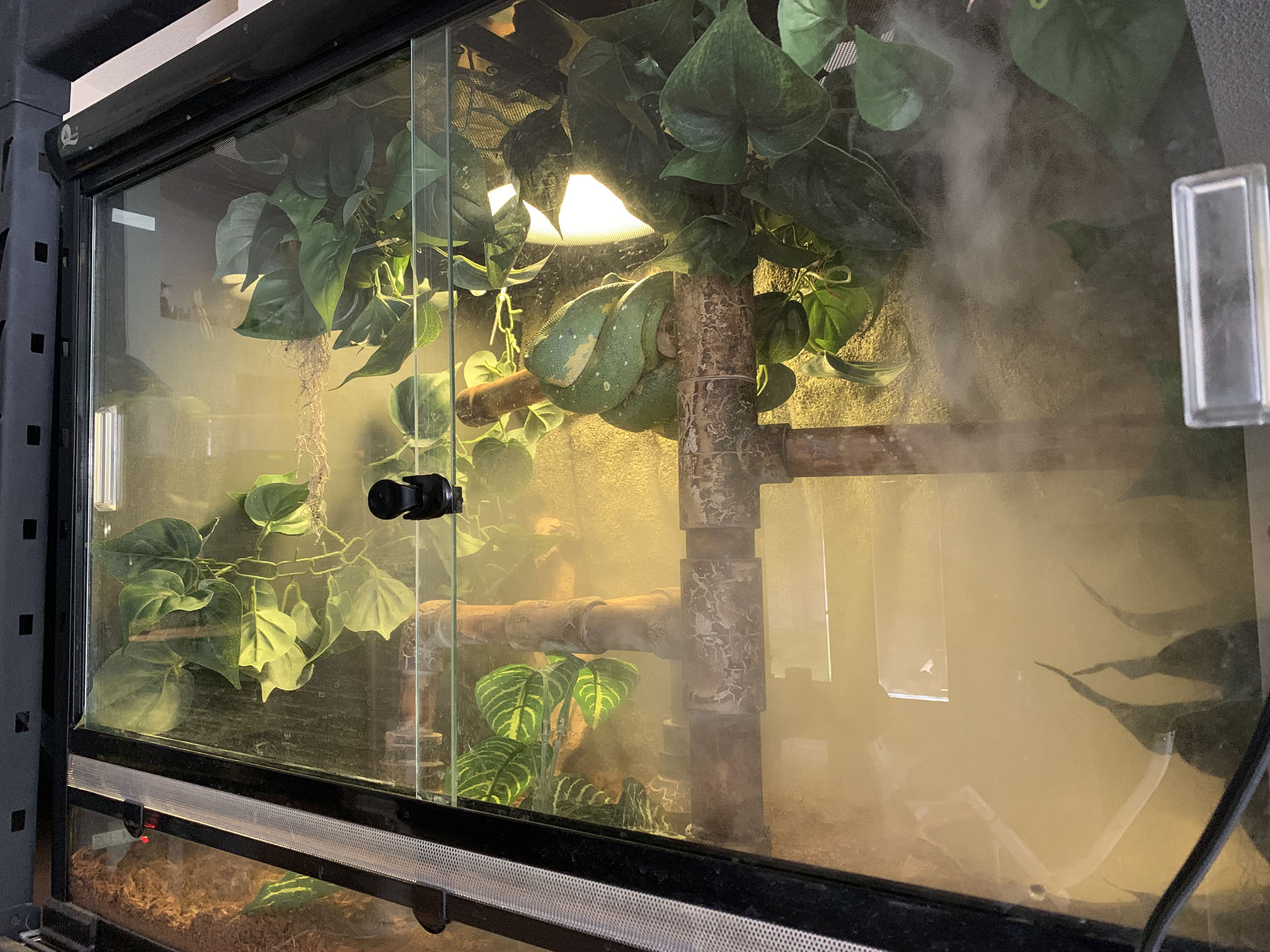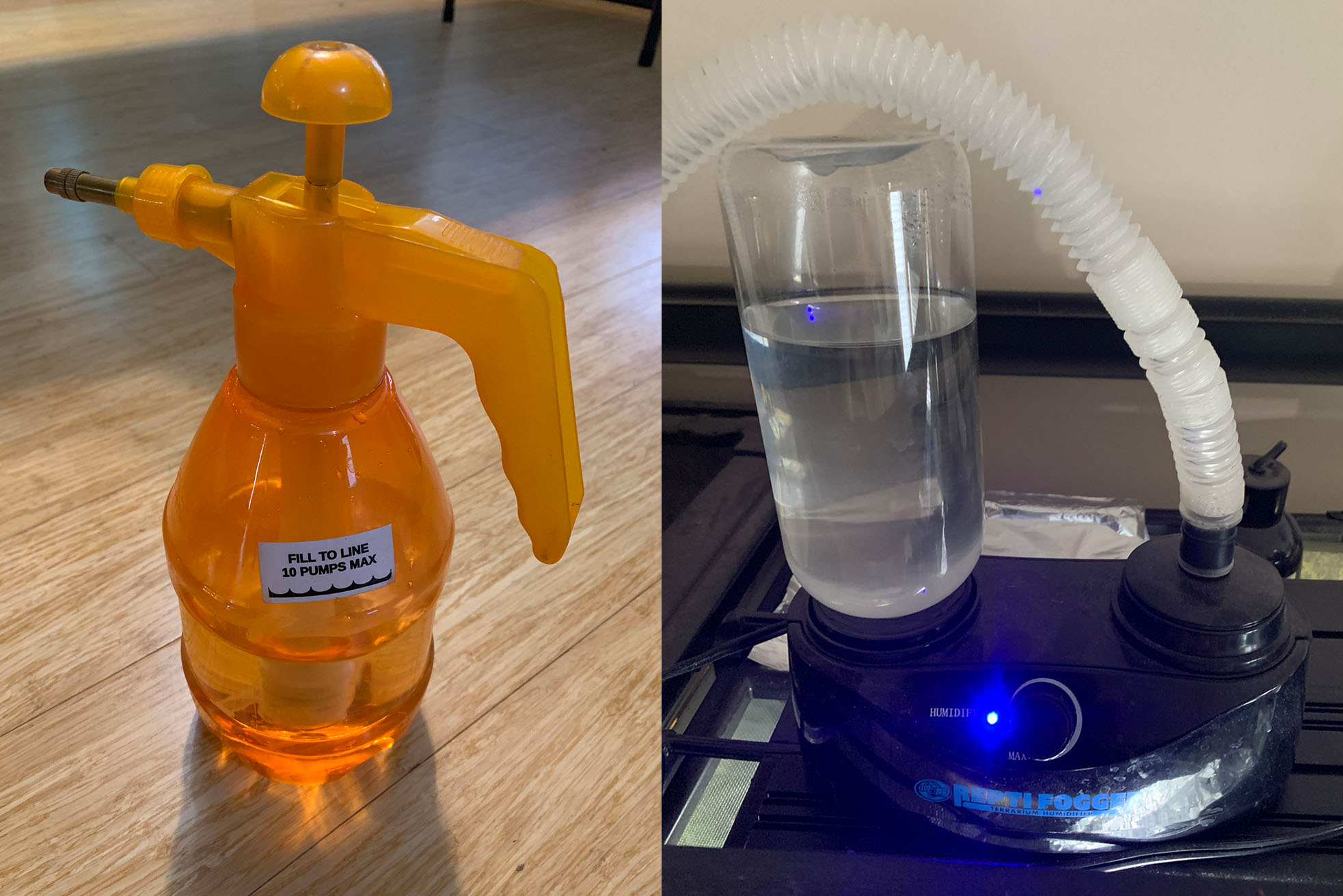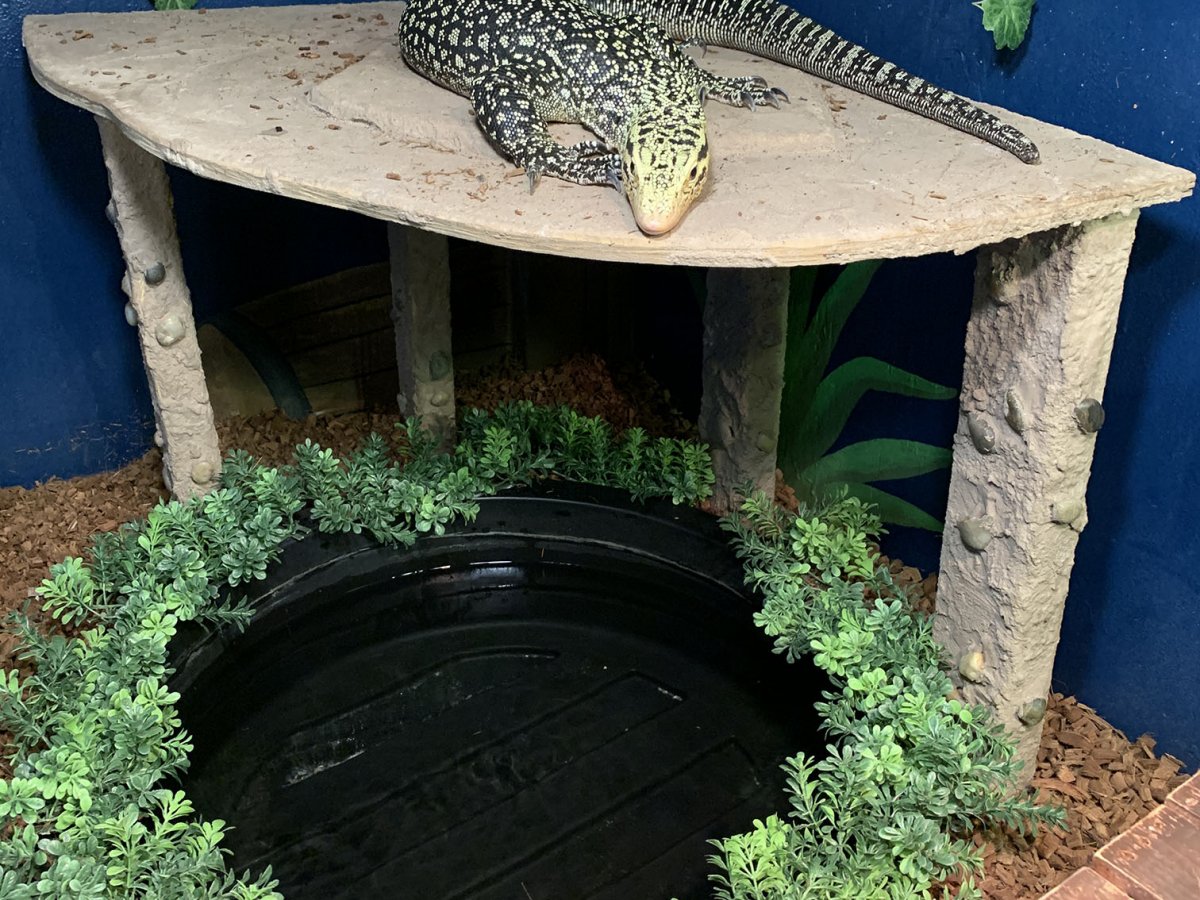Humidity can be a challenge for new and more experienced reptile keepers alike, but it is an important consideration for the maintenance of each species. Here, we will talk about management for higher-humidity species.
Humidity gauges are important, but many of them will fail under higher ranges. Some gauges exist for outdoor use and have separate receiver and transmitter components—these may do better than others. Additionally, some expensive humidity gauges have probes that you can put into the enclosure, much like the probes used for thermostats.
While it is good to have humidity-measuring equipment, it is equally important to watch the animal. An incomplete shed or a snake consistently seeking shelter under (or soaking in) its water bowl may need higher humidity, regardless of what your sensor is reading. In a lizard, this may present as shed coming off only in small pieces, or staying stuck on the animal. Shed constricting around an animal’s toes or tail can result in a loss of blood circulation and, ultimately, a loss of the body part. Denting/dimpling in the lens of a snake’s eye can also be an indicator that humidity is not high enough.
Raising Humidity
You can promote higher humidity in an enclosure by misting daily, either by hand or using an automated sprayer. How often the enclosure needs to be misted will depend on many things, including where you live and what kind of environment the enclosure sits in. In Florida, where we have the A/C running constantly and many of our critters have overhead heat, we need to mist our animals twice a day. Misting will create a spike in humidity, which will slowly drop throughout the day as the substrate dries. Then, it is ready to be misted again.
The best way to bring up humidity is to go in and manually spray and turn all the substrate in the enclosure. This way, the dry substrate underneath can absorb moisture. We try to do this once a week, possibly more if a snake is in shed. Of course, it is essential to make sure that the substrate is not soaked, which will promote mold growth on the substrate. Sustained wet surroundings will also put your snake at risk of bacterial growth on their scales (scale rot).
Using a reptile fogger may help boost humidity, and it can be used as a supplement to spraying when an animal is in shed. Take care when using these, as they may drench part of the enclosure and the rest—including your reptile!—will be dry. It is important to monitor both animal and substrate when using a fogger.
Enclosure and Equipment Considerations
How you heat your enclosure will also affect your humidity. Because heat tape and heat mats only heat the immediate area, they have the least amount of impact on the enclosure’s humidity. Overhead heat sources like ceramic heat emitters (CHEs), lamps and radiant heat panels will cause the humidity to drop faster. Sometimes, placing the heat source over a water dish may help with humidity, as the water directly underneath will evaporate more quickly. In more advanced setups, a pond with filtration and running water can help immensely with humidity, especially if it has a heat source overhead.
Finally, the enclosure itself is a consideration for keeping high-humidity species. PVC enclosures will hold humidity longer than their glass counterparts and may not need to be misted as often. And, glass enclosures with an open screen will lose humidity faster than glass enclosures with a screen that is covered. Of course, if the entire room has high humidity, this may not be a problem.
Blocking the screen in glass enclosures may be necessary. This can be done with aluminum foil, towels (not close to a heat source), and saran wrap. However, you must consider that airflow for snakes and lizards is still very important, and a lack of airflow can lead to respiratory infections. Therefore, when blocking screen/air holes make sure you are leaving enough for air to circulate around the enclosure.




